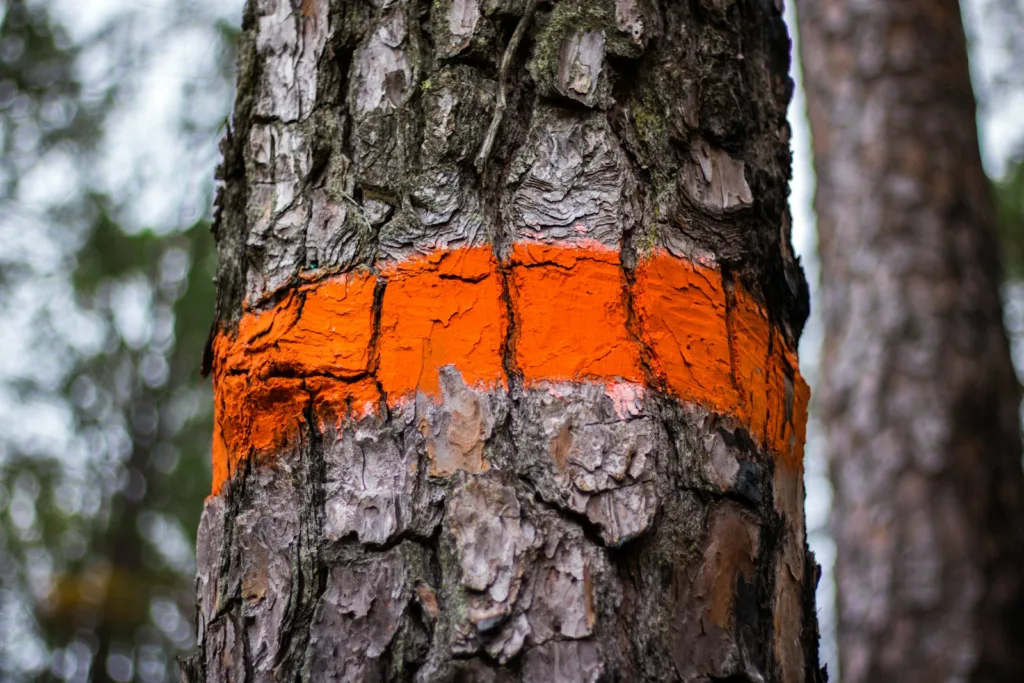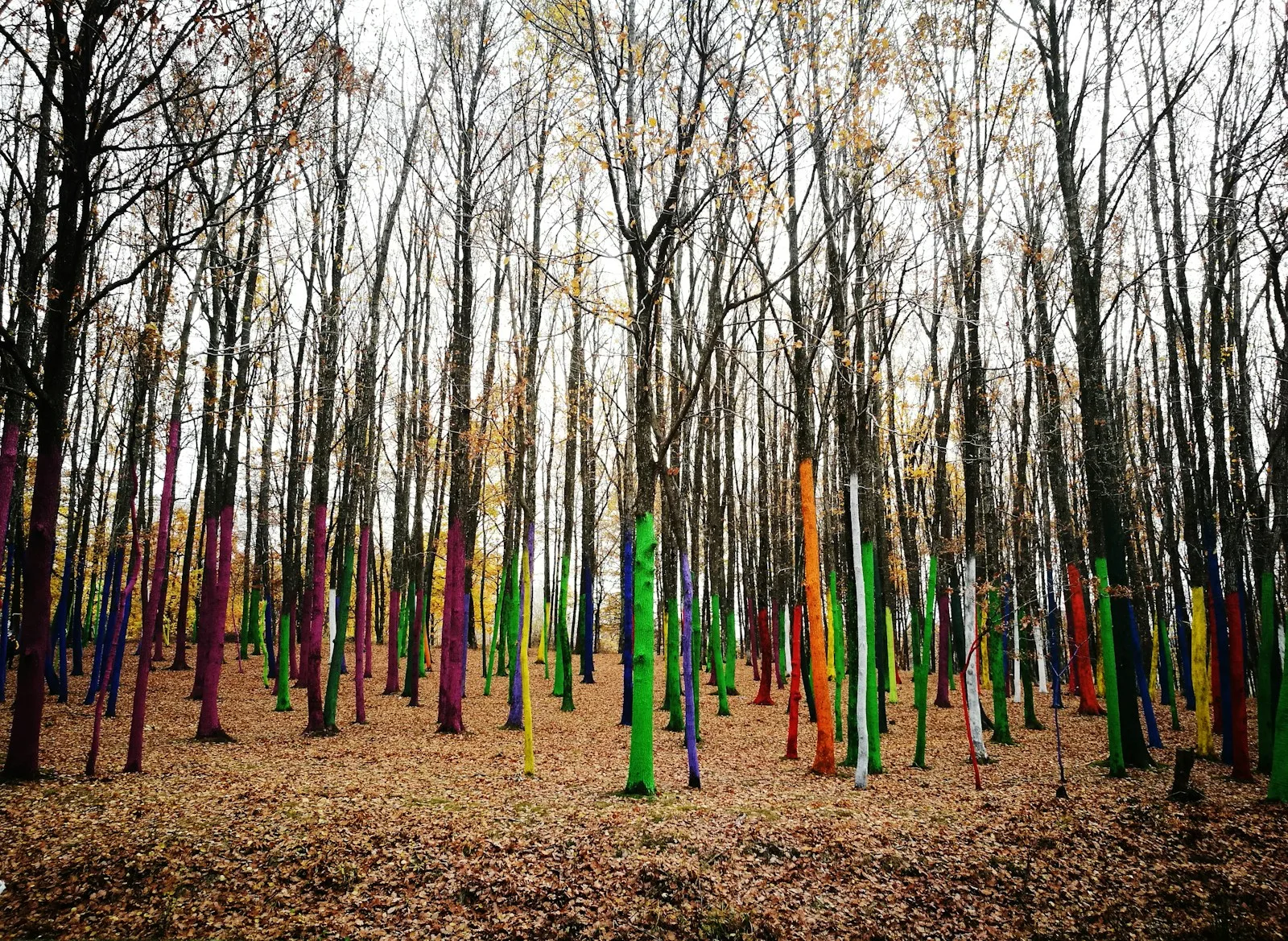
Table of Contents
There are times when you’ll find traces of color on tree trunks, whether you’re walking down a city sidewalk or hiking through a dense forest. These are codes that contractors and employees in the forestry industry use to communicate various information, such as which trees should be cut or which trees need medical attention.
Why Are Trees in the City Marked With Paint?
All cities use codes to identify trees. Here, Boulder, Colorado, will serve as an example. If the base of a tree in Boulder is spotted, it may need to be treated for drip blight, elm scale, or emerald ash borer. If there are color spots at the height of the head, the tree needs pruning.
As Boulder Parks and Recreation Department assistant forester Ken Fisher says, “Basically it marks the tree in a vague way.” This tells our contractor that this is the tree we are talking about, even though many people don’t see it. Since we’ve been using paint dots for over 25 years, some trees have multiple paint dots.”
Pruning and treatment spots also alert landowners near trees. That way, they will know which trees will be affected when the city notifies them of impending pruning or treatment.
Why Are Trees in the Forest Marked with Paint?
The sale of wood is related to the color of the forest. Different colored circles, Xs and dots determine which trees should be cut down, which trees are at risk and which trees should be left alone. Additionally, they demarcate environmental issues and property lines.
According to Christopher Evans, University of Illinois at Urbana-Champaign Extension forestry and research specialist, “some sites are marked with nesting trees of rare or endangered species.” This is the case for the federally endangered red-cockaded woodpecker in the southern United States. Usually, a white ring is used to identify their tree nest.”
In Western states, a paint ring may signify a tree affected by mountain pine beetles. A splotch of head-high color could also be a trail marker, showing hikers or mountain bikers which way to go.
Are Painted Tree Markings Universal in the Forest?
Not really. “Basically, there are no hard and fast standardizations for using marking paint in forestry,” Evans explains. “This can lead to confusion when trying to generalize the meaning of different symbols and colors.”
However, he notes that there are some commonalities among the symbols of afforestation. Often, the X represents a tree or hazard that needs to be removed. Dots and circles can indicate taking trees, but they can also indicate leaving trees. Generally, trees bearing digits are elongated before harvesting. The color purple is a common indicator of property boundaries in many states, indicating that trespassing is prohibited.
U.S. The Forest Service (USFS) has set some guidelines. USFS Regional Communications Officer, Donna Nemeth, says the color red often indicates the edge of a USFS territory. Harvest borders are painted orange or yellow, and trees within certain regions are painted blue, orange, green, or yellow, depending on whether they are to be harvested or left unpainted. The black icon acts as an “eraser”, erasing errors.
Are Painted Tree Markings Universal in the City?
Once again, no. But let’s go back to the Boulder example. Every year they change the colors of the markers there.
“There are only half a dozen colors on the tree that are bright colors like blue, red, yellow and orange,” Fisher explains. “Those are hues we’ve used often. The trimming activity this year is red, and I’ve visited trees with red spots this year and in previous years.”
Why are Trees Painted White?

Usually, the purpose of painting the entire lower trunk of a tree white is to protect it from sunlight. Winter sunscald is caused by temperature differences between cold nights and bright sunlight, causing the bark to crack and fracture. In addition to harming the tree, it can make it more vulnerable to diseases and pests.
“This type of painting is typically done on thin-barked residential trees or gardens,” Evans explains. “Whitening the trunks warms the bark during the day and reduces the chance of sunburn.”
What is the Paint Marking for Emerald Ash Borer Treatment?
It varies from city to city. To indicate that a tree is being treated for emerald ash borer, the boulderer uses three different colored spots near the base of the tree. That’s because, according to Fisher, “our treatments are rotated every three years. We treat about 1,000 trees a year, or one-third of all the trees we treat.”
Is Paint on Trees Used to Deter Pests?
Although this is often not a good idea. “Some people paint wounds or cut surfaces, such as after pruning, as a way to deter insects,” Evans explains. “But this is generally not recommended because painting the wound interferes with the tree’s ability to seal the wound and traps moisture that can promote rot.”
What if I Want to Know More About Specific Painted Tree Markings in My Town?
Your city’s forestry department is helpful and may have more specific information available on their website. You can zoom in on your property to get aerial photos of all the surrounding public trees and their species on Boulder’s Tree Mapping page.
READ | Stump Solved: Unlocking tree stump removal with 1 common household ingredients


1 thought on “When Trees Are Painted: Exploring 8 Affect and Artistry”